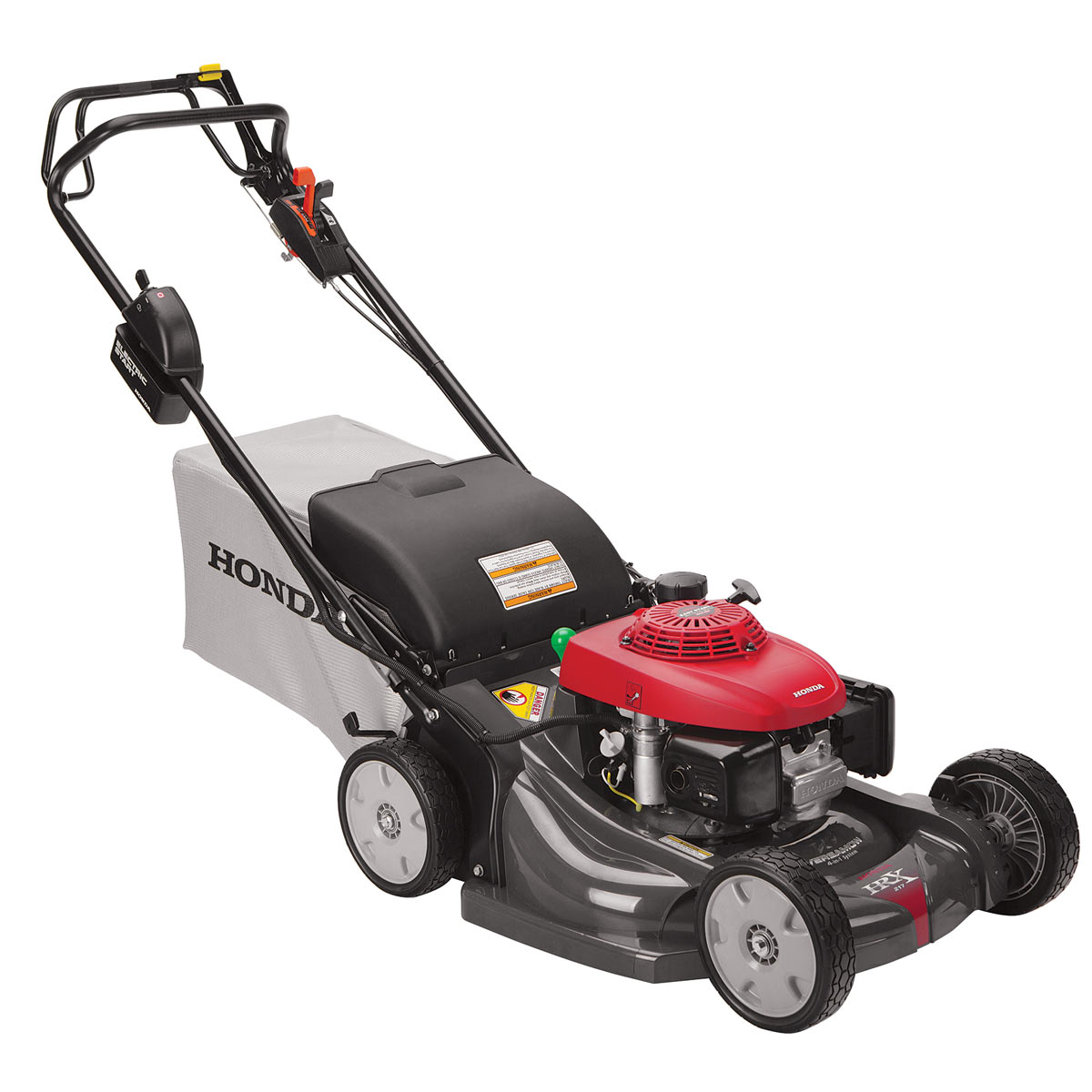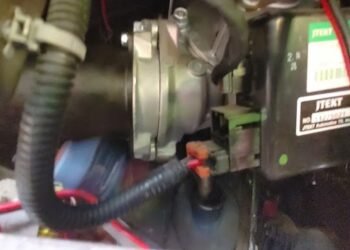Honda mower troubleshooting often starts with checking the fuel and air filter. Ensure the spark plug is functioning correctly for a smooth operation.
Experiencing issues with your Honda mower can be frustrating, especially when you’re looking to maintain a pristine lawn. Honda mowers, known for their reliability and efficiency, sometimes encounter problems that can hinder their performance. From starting troubles to uneven cuts, various issues can arise.
This guide aims to demystify the troubleshooting process, making it straightforward for homeowners. By addressing common problems and providing easy-to-follow solutions, we intend to help you get your Honda mower back to its optimal condition. Ensuring your mower receives regular maintenance and timely repairs can significantly extend its lifespan and maintain the health of your lawn. Let’s dive into the specifics of troubleshooting your Honda mower, focusing on practical steps to diagnose and fix common issues.

Credit: blog.hondalawnparts.com
Identifying Common Honda Mower Issues
Troubleshooting your Honda mower can be straightforward. By understanding common issues, you can quickly return to maintaining your lawn. Let’s diagnose the typical problems your mower might face.
Symptom-based Approach
Begin with symptoms. They guide us to the problem’s root. This approach saves time and effort. Below, find common symptoms and what they might indicate about your mower’s health.
- Engine Won’t Start: Check fuel, oil, and spark plug.
- Poor Cutting Performance: Inspect blades and deck level.
- Excessive Vibration: Blades may be unbalanced or damaged.
Telltale Signs Of Trouble
Some signs clearly point to trouble. Recognize these early to prevent further damage. Here’s what to watch for:
| Sign | Possible Issue |
|---|---|
| Smoke from Engine | Oil overflow or engine overheating |
| Uneven Cuts | Dull blades or improper deck adjustment |
| Hard Starting | Old fuel or clogged carburetor |
Starting Problems: Causes And Solutions
Is your Honda mower refusing to start? A lawn mower that won’t kick into action can be frustrating. Several issues may be at play here. Let’s troubleshoot common starting problems. Understanding the cause helps us find the right fix.
Fuel System Checks
First, ensure your mower has fresh fuel. Stale fuel is a common issue after winter storage. A clogged fuel filter also hinders starting. Replace it if necessary. Check the fuel lines for cracks or leaks. Make sure the carburetor is clean. A dirty carburetor often causes starting troubles.
- Use fresh fuel – Old fuel can prevent starting.
- Replace the fuel filter – A clean filter ensures smooth fuel flow.
- Inspect fuel lines – Look for cracks or damage.
- Clean the carburetor – A dirty carburetor can block fuel.
Ignition System Diagnostics
Next, we move to the ignition system. A faulty spark plug often causes start-up issues. Check for a dirty or disconnected spark plug. Clean or replace it as needed. Ensure the ignition coil is functioning. Use a spark plug tester to check for spark. No spark often means a new ignition coil is needed.
| Check | Action |
|---|---|
| Spark Plug | Clean or replace. |
| Ignition Coil | Test and possibly replace. |
By systematically checking these systems, you can often solve starting problems. Keep your Honda mower running smoothly with proper maintenance.
Mower Performance Hiccups
Honda mowers are reliable, but sometimes they hiccup. This section will guide you through common performance issues and how to fix them. Your mower will be back to its best with simple troubleshooting techniques.
Airflow And Filter Maintenance
Good airflow is crucial for mower performance. A clogged air filter can suffocate the engine, reducing efficiency and power. Regular maintenance keeps the air clean and the mower running smoothly.
Check and clean the air filter often. Replace it when it’s beyond cleaning. This simple step can prevent bigger issues.
- Remove the air filter cover.
- Take out the filter. Look for dirt and debris.
- Clean with air or replace if it’s too dirty.
- Reinstall the filter and cover securely.
Spark Plug Troubleshooting
Spark plugs ignite the fuel in your mower’s engine. A faulty plug can cause starting troubles or uneven running. Check the spark plug if the mower doesn’t start or runs poorly.
- Disconnect the spark plug lead.
- Remove the spark plug with a socket wrench.
- Inspect for deposits or damage.
- Clean the plug or replace it if damaged.
- Reconnect the lead firmly.
Remember: A fresh spark plug ensures a smooth start and optimal mower performance. This fix is quick and cost-effective.

Credit: m.youtube.com
Handling Engine Overheating
Handling engine overheating in Honda mowers is crucial. A hot engine can cause serious damage. Let’s explore ways to keep your mower running cool.
Cooling System Overview
Honda mowers use air-cooled engines. These engines rely on proper air flow to maintain cool temperatures. The cooling system consists of fins and a fan. They work together to dissipate heat.
Regular Cleaning And Ventilation
Regular cleaning is key to preventing overheating. Debris can block air flow. This makes the engine hot. Make sure to clean the air filters and cooling fins often.
- Turn off the engine.
- Wait for all parts to cool down.
- Remove debris from air intakes.
- Clean with a brush or compressed air.
- Check the cooling fins for blockages.
Ventilation is also important. Make sure the mower’s vent is clear. This ensures cool air can enter. Always operate your mower in an open area. This helps avoid overheating.
| Cleaning Task | Frequency |
|---|---|
| Air Filter | After 25 hours of use |
| Cooling Fins | Every season |
Uneven Cuts And Mowing Issues
Is your Honda mower leaving your lawn looking patchy? Uneven cuts can ruin the look of your garden. Let’s troubleshoot common Honda mower issues that cause uneven mowing.
Blade Sharpness And Balance
Dull blades tear grass, resulting in a ragged cut. A sharp blade is crucial for a clean cut. Here’s what to check:
- Inspect the blade for wear and tear.
- Look for nicks or bends.
- Use a file or a grinder to sharpen the blade.
- Ensure the blade’s balance using a balancer.
Unbalanced blades cause vibration and uneven cuts. Always balance the blade after sharpening.
Height Adjustment Tips
Correct mowing height prevents scalping and promotes healthy grass. Follow these height adjustment tips:
- Check the mower’s manual for height settings.
- Adjust all wheels to the same height.
- Change height according to the season.
- Never cut more than one-third of the grass height.
Consistent wheel height ensures an even cut across your lawn. Always mow with the right height setting.
Battery Maintenance For Electric Models
Keeping your Honda electric mower running starts with proper battery care. Follow these tips to ensure your mower’s battery stays healthy and efficient. Regular maintenance extends battery life and guarantees peak performance.
Charging Best Practices
- Charge after each use to maintain battery power.
- Use only the charger provided with your mower.
- Keep the battery and charger in a dry, cool place.
- Avoid charging in extreme temperatures.
- Don’t overcharge; unplug once fully charged.
Battery Health Checks
Regular battery inspections keep your mower ready. Here’s what to check:
| Check | Action |
|---|---|
| Terminals | Clean any corrosion. |
| Charge level | Test before use. |
| Damage | Look for cracks or leaks. |
| Age | Replace if older than specs suggest. |
Spot checks before each use prevent unexpected power loss. A well-maintained battery ensures your Honda mower is always ready when you are.
Self-propulsion Troubles
Many Honda mower owners face issues with their mower’s self-propulsion. This part of the blog dives into common troubles and their fixes. We focus on the drive belt and wheel and transmission care. These are key to smooth self-propulsion.
Drive Belt Inspection
First, check the drive belt. A worn or loose belt causes problems. Follow these steps:
- Turn off the mower and wait for all parts to stop moving.
- Remove the cover that shields the drive belt.
- Look for signs of wear or damage on the belt.
- If the belt is damaged, replace it with a new one.
A good belt means a smooth ride for your mower.
Wheel And Transmission Care
Next, look at the wheels and transmission. Proper care keeps them running well. Here’s what to do:
- Clean debris from wheels and transmission area.
- Check wheel treads for wear. Replace worn wheels.
- Ensure wheels turn freely. Apply lubricant if they stick.
- Inspect the transmission for leaks. Seal any found.
Regular care prevents big problems later.
Noise And Vibration Anomalies
Noise and vibration can indicate trouble in Honda mowers. These signs should not be ignored. They often point to issues needing quick fixes.
Loose Parts And Fasteners
Mowers shake during use. This can loosen parts. Check these often:
- Bolts – Secure them tightly.
- Screws – Ensure they are not missing.
- Washers – Replace if worn out.
Use a wrench to tighten parts. This will reduce unwanted noise.
Harmonic Balancing
Correct harmonic balancing is key. It keeps mowers running smoothly. Look for these:
- Blade balance – Uneven blades cause shaking.
- Engine mount – It should be stable.
Use a blade balancer for even cutting. This will prevent vibrations.
Preventative Measures And Regular Upkeep
Honda mowers stand out for their reliability. Yet, regular upkeep is vital. It prevents breakdowns. It also extends the mower’s life. Let’s explore essential maintenance tips.
Seasonal Maintenance Schedule
A seasonal schedule ensures your mower stays in top condition. Follow these steps every season:
- Check the oil level.
- Replace the air filter.
- Sharpen the blades.
- Clean the undercarriage.
- Inspect the spark plug.
These tasks keep your mower running smoothly. They also prevent costly repairs.
Long-term Storage Tips
Proper storage is key for longevity. Here’s how to store your mower long-term:
- Drain the fuel tank.
- Disconnect the spark plug.
- Clean the entire mower.
- Lubricate moving parts.
- Store in a dry place.
These steps prevent rust and engine damage. Your mower will be ready for the next use.

Credit: m.youtube.com
Frequently Asked Questions
Why Does My Honda Lawn Mower Start Then Cut Out?
Your Honda lawn mower may cut out after starting due to a clogged carburetor, dirty air filter, faulty spark plug, or stale fuel. Regular maintenance can prevent these issues.
What Is The First Thing To Check If A Lawn Mower Won’t Start?
The first thing to check if a lawn mower won’t start is the fuel level. Ensure the mower has enough gas to operate.
Why Does My Honda Ride On Mower Keep Cutting Out?
Your Honda ride-on mower may cut out due to a clogged air filter, stale fuel, or a dirty carburetor. Regular maintenance and cleaning can prevent this issue.
How Do You Diagnose A Lawn Mower Problem?
To diagnose a lawn mower problem, start by checking the fuel, oil, and air filters. Inspect the spark plug and ensure the carburetor is clean. Listen for unusual noises and observe the mower’s performance for any irregularities.
Why Won’t My Honda Mower Start?
A Honda mower may not start due to a stale fuel, clogged air filter, or a faulty spark plug. Check these components first.
Conclusion
Navigating Honda mower issues doesn’t have to be a headache. Armed with the right tips, you can often find a quick fix or determine when professional help is needed. Remember, regular maintenance is key to long-term performance. For further assistance, consult your owner’s manual or reach out to a certified Honda service provider.
Keep your mower running smoothly and your lawn will thank you.
















